As well as helping to advance your own family history research and to connect with your own biological relatives, your direct-to-consumer DNA test results can help other families and the community.
If you have already tested your DNA at one of AncestryDNA, MyHeritage, 23andMe, Family Tree DNA or Living DNA, you can follow the instructions below to upload your DNA data to FTDNA & GEDmatch and opt-in to law enforcement matching visibility.
If you haven’t yet tested your DNA for family history purposes but you would like your DNA to potentially help solve cold cases, I recommend testing at AncestryDNA, as it is relatively fast (and the easiest from Australia), has the biggest DNA tester database, and the results are easy to understand. When your results are ready, follow the instructions below.
Quick-links to content below:
Two of the genealogy DNA databases – GEDmatch & Family Tree DNA – allow users to opt-in to being visible as matches (if they are related) to DNA profiles uploaded by law enforcement. Law enforcement must upload DNA profiles to GEDmatch PRO, which is a dedicated portal separate from GEDmatch.
Ancestry.com, MyHeritage, 23andMe and Living DNA prohibit testing or uploads of law enforcement DNA profiles to their databases (refer to their T&C links below).
Uploading and opting in at GEDmatch and Family Tree DNA means that your DNA could help with the identification of unidentified human remains (including John Does & Jane Does), and/or perpetrators of violent crimes. The more people that upload and opt-in, the more easily such DNA profiles can be identified.
If you opt-in, you will only appear as a DNA match if you are actually related, and law enforcement or their authorised researcher will only see the same details that you see for your own matches – ie. the match name/alias, contact email, the amount of shared DNA (cMs & shared segments), shared matches, and any family tree or profile information – if provided. Police do not have special access to search through whole databases of DNA or personal information… they can only see genetic matches to their uploaded DNA profile, for example, ‘a 25cM match to *ABC, [email protected]’.
DNA profiles uploaded by law enforcement won’t be visible in your match list – as they are hidden, but you will see matches to all your other genetic relatives who are in the same genealogy DNA database and who have opted in to matching.
DNAJustice.org is not a genealogy database. It is a non-profit DNA database built to assist law enforcement agencies in the identification of unidentified human remains and perpetrators of violet crimes, such as homicides or sexual assaults. The DNA Justice Foundation’s new database was announced at the I4GG conference on 12 Mar 2023, and is now accepting uploads from informed members of the public who can upload their DNA data file and other identifying information for use in IGG.
Your DNA can help even if the match ends up being very distant or not a match at all, as that might mean that the branch you belong down is too distant or not related and can be eliminated from further research.
When there are no DNA matches to a particular branch or family of interest, genealogists typically need to perform more indepth research to reconstruct the family using non-DNA evidence (ie. public & historical records, newspapers, genealogies, etc) to look for possible connections down that line. One small DNA match could avoid that need.
So, regardless of the size of your DNA match, consider it valuable in helping to save time and unnecessary research, and to guide the research focus to where it is really needed. And if your DNA doesn’t help in one case, it might help in other cases – even just for elimination purposes.
If you have a missing person in your family, it is important that a close relative gets their DNA into all the genealogy DNA databases (AncestryDNA, 23andMe, MyHeritage, Family Tree DNA and Living DNA), and uploads to GEDmatch, in case their missing family member or a descendant is in one of the databases.
If your missing relative happens to be one of the thousands of sets of unidentified human remains, and their DNA profile is ever uploaded to GEDmatch or FTDNA, their identity will be determined very quickly if a close family match is found waiting in the database.
If you are in Australia, check that your missing relative has been registered with AFP Missing Persons, and that you have provided information and family reference DNA samples to the National DNA Database for Unidentified and Missing Persons.
Help more by linking your family tree to your DNA at GEDmatch and FTDNA – even if it is just a tiny tree back to your grandparents, adding what you know will help others find their genealogical connection to you. GEDmatch has a new Mini-Family Tree tool, which allows you to very easily add names and dates back to your grandparents (all living people will remain private).
All Family Tree DNA accounts include a free family tree linked to the tester (ie. you), and you can click to add your parents’ names, your grandparents, or however much you know. The other option is to upload a GEDCOM family tree file if you have one (eg. export a GEDCOM file from your Ancestry Tree Settings page, or from your family tree software).
On family tree websites, living people always remain private/hidden to other users by default, so it helps if you go back far enough to include some deceased ancestors (eg. grandparents, great grandparents). Remember to mark deceased relatives as ‘deceased’ in your family tree, even if you don’t know their dates of death, or they won’t be visible to anyone else but you.
When you upload your DNA data file to DNAJustice.org, you are given the option to add a link to your family tree elsewhere, and the option to add the names of your grandparents (if you know them) so that IGG practitioners can build your pedigree back generations further. If your parentage is unknown, there is a checkbox to request assistance identifying one or both of your biological parents.
Consider adding information to your FTDNA profile. You could add your location, where your ancestors are from, your GEDmatch kit number, a link to your family tree on another website (eg. if you have a free family tree on Ancestry, MyHeritage, WikiTree, FamilySearch), your social media profile link, or just type in some basic family information that might help the researcher build back your pedigree.
To add profile information to your FTDNA account, log in and hover over your name in the top right corner, click on Account Settings > Account Information, scroll down to My Personal Story, add your information and click Save.
At DNAJustice.org, there is an area in your profile to enter identifying information (optional).
GEDmatch‘s privacy settings relevant to law enforcement matching are:
Family Tree DNA‘s privacy settings relevant to law enforcement matching are:
At both GEDmatch and FTDNA you can opt-in and opt-out again at any time.
Each DNA tester must make their own decision to opt-in or opt-out of law enforcement matching. Do not opt-in or opt-out for other people whose DNA tests you manage without obtaining their informed consent. Ensure they understand where their DNA will be shared, what information can be seen by matches, and the benefits and risks – each of which could be perceived positively, negatively or neutrally by different people.
The process is simple: the first step is to download a copy of your raw DNA data file from your testing company, then follow the instructions below to upload that file to both GEDmatch and Family Tree DNA and check that you are opted in to law enforcement matching.
Processing will take anywhere from a few hours to a few days, and then you’ll have a whole new list of DNA matches to explore.
If you have already done a Family Finder (autosomal DNA) test at Family Tree DNA (ie. a cheek swab test, not an upload), then you only need to download your FTDNA data file and upload it to GEDmatch and then check that your settings at both companies are opted-in to law enforcement matching.
DNAJustice is not a genealogy database, so you won’t get matches or have any tools to play with. You participate by uploading your DNA data file to allow visibility as a match if you are related to a to law enforcement profile. It is ideal for people who want their DNA to help solve IGG cases but don’t necessarily want to receive messages from distant relatives about family history. DNA Justice will notify you if a case was solved in which your DNA match assisted.
Follow the instructions below to download your raw DNA data file from your DNA testing company and save it to your computer or cloud storage. Keep it zipped – there’s no need to open it, it is just a text file containing approximately 700,000 rows of numbers and letters (approx. 6MB zipped or 18MB unzipped).
You only need to download data from one company… if you have tested at Ancestry, download your AncestryDNA data then go to Steps 2, 3 & 4. Otherwise, follow the relevant instructions below to download your DNA data from the company you have tested at, then proceed to Steps 2, 3 & 4.
Sign-in to your Ancestry account.
Click on the DNA tab at the top of the page:

Click on SETTINGS near the top right of the page:
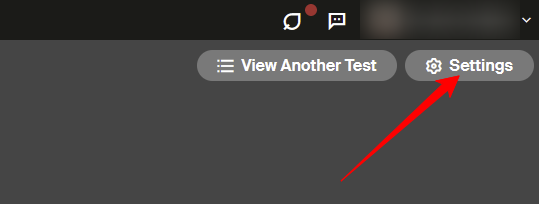
If no SETTINGS button is visible, click on your name above and select ACCOUNT SETTINGS, then click on DNA on the left menu, then select your DNA test to view your DNA Settings page.
Scroll down the page and click on Download Raw DNA Data:
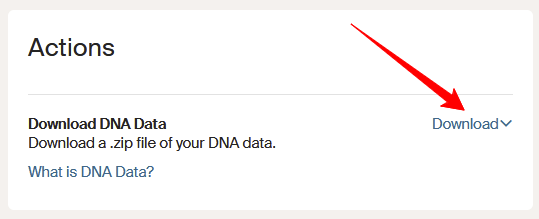
Enter your password, tick the checkbox to acknowledge you’ve read the download notice, then click on CONFIRM:
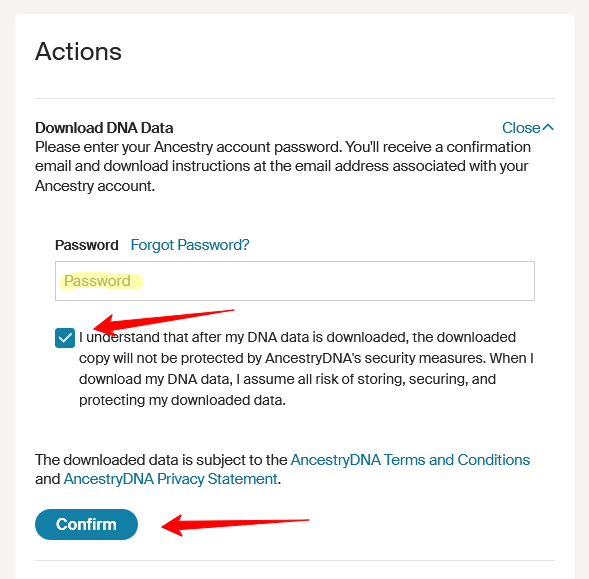
Check your email for a message from Ancestry.
Click the link in the email to download your data and save the file to your computer. Leave it zipped (ie. save it, don’t open it).
TIP! If you manage data for multiple family members, it is best to create a separate folder for each person so their DNA data files don’t get mixed up.
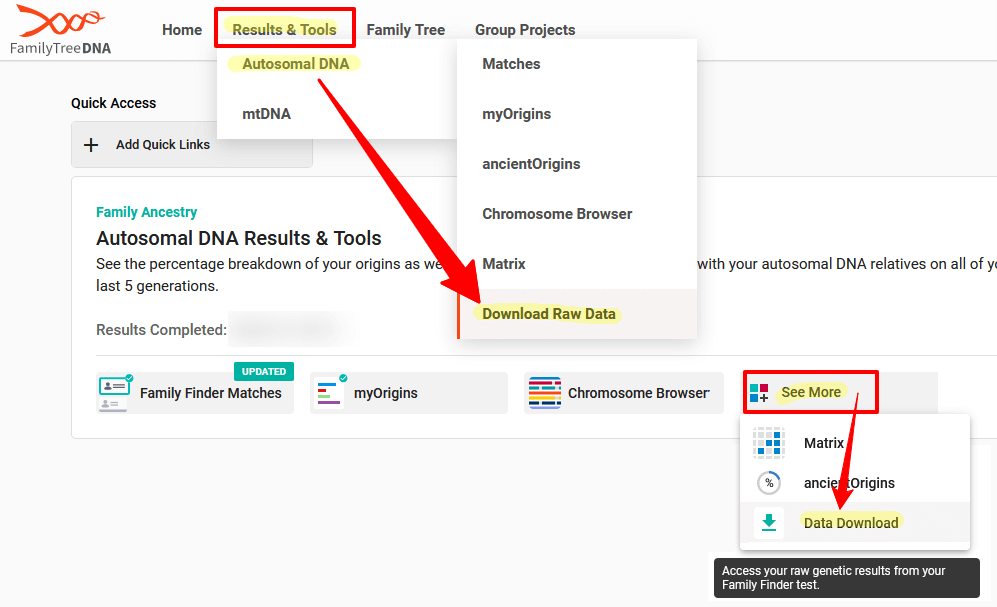 Click on the Build 37 Concatenated Raw Data file to Save it to your computer or cloud storage:
(Note: leave it zipped, ie. save it, don’t open it):
Click on the Build 37 Concatenated Raw Data file to Save it to your computer or cloud storage:
(Note: leave it zipped, ie. save it, don’t open it):
 TIP! If you manage data for multiple family members, create a separate folder for each person so their DNA data files don’t get mixed up.
TIP! If you manage data for multiple family members, create a separate folder for each person so their DNA data files don’t get mixed up.Sign-in to your MyHeritage account
Hover over the DNA menu tab and click on Manage DNA kits:
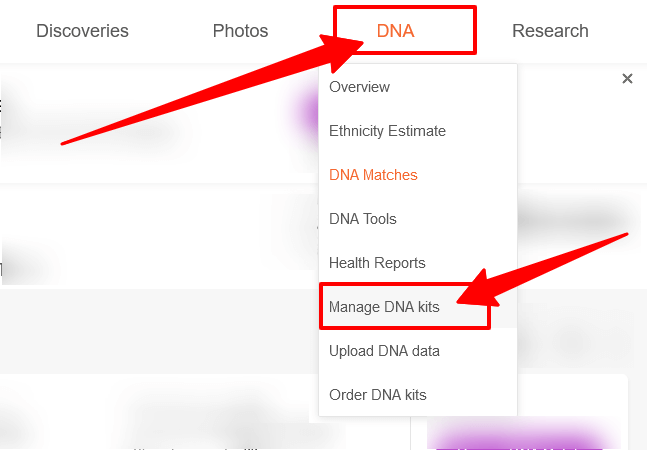
Click on the three dots to the right of your kit, then click on Download kit:
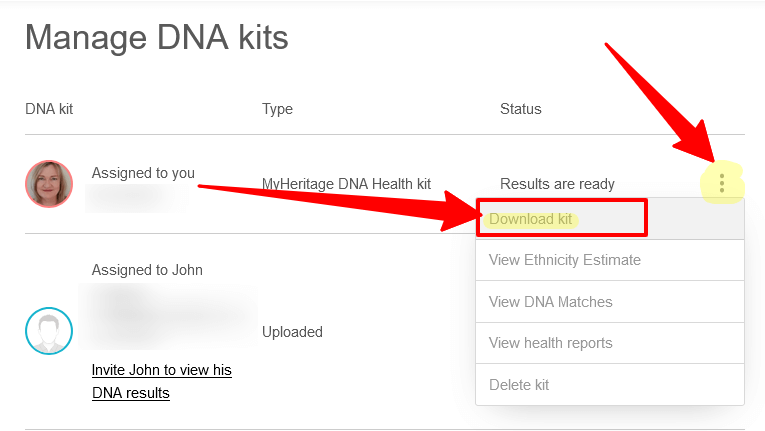
Read the popup then scroll down and click CONTINUE.
Tick the checkbox to acknowledge you have read the download notice, and then click CLOSE.
Check your email for a message from MyHeritage.
Click the email link to download your data file and your browser will open again
Enter your Password and click DOWNLOAD, select a location and click SAVE (leave it zipped, ie. save it, don’t open it).
TIP! If you manage data for multiple family members, create a separate folder for each person so their DNA data files don’t get mixed up.
Sign-in to your 23andMe account.
Click on the drop-down arrow next to your profile picture & name near the top right, and then click on Browse Raw Data:
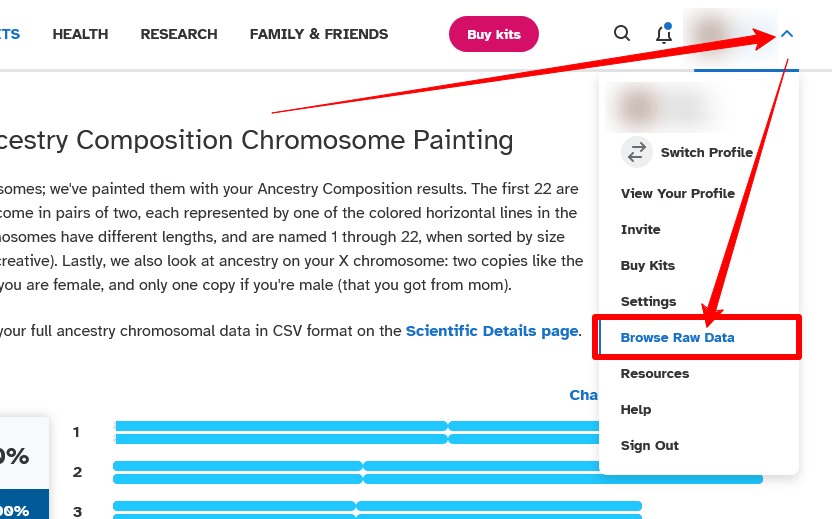
Click on the Download tab:

Scroll down and click on Submit request to download your raw data:
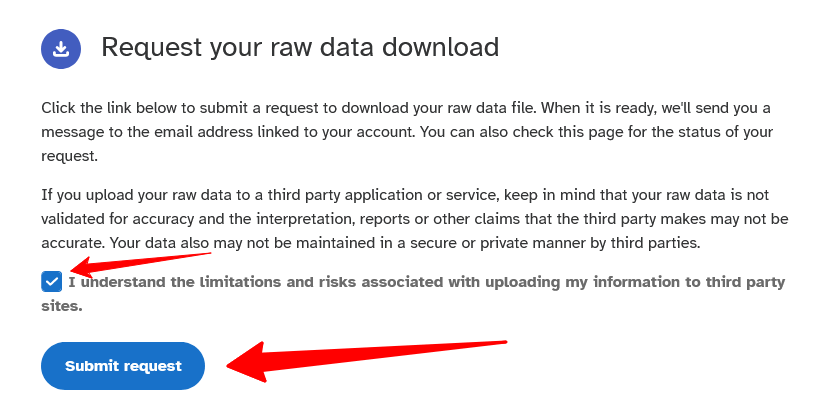
23andMe will email you when the data file is ready to download
Click the link in the email to download the data file, and save it to your computer.
TIP! If you manage data for multiple family members, create a separate folder for each person so their DNA data files don’t get mixed up.
Sign-in to your Living DNA account.
Click on the Profiles tab on the left menu:
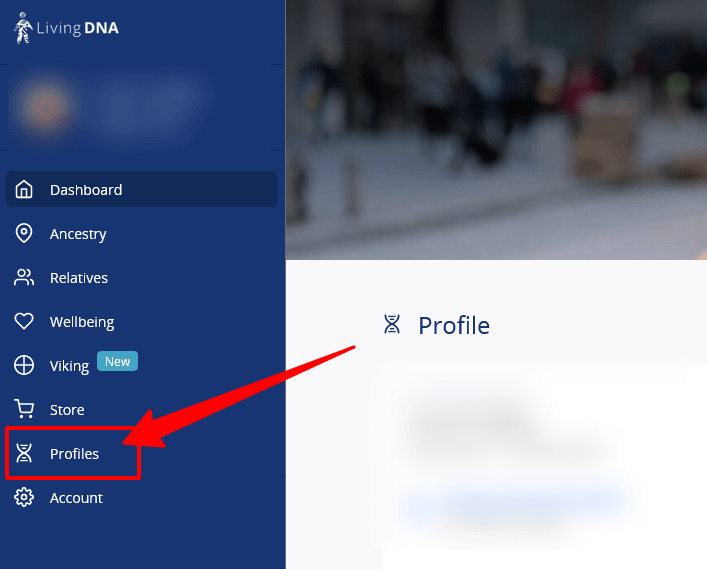
The Profile page lists all the DNA kits in your account. Either click on the little blue Download icon to the right of the profile you want to download, or click the little blue arrow at the far right to go to the profile detail page:
![]()
If you clicked through to the Profile detail page, scroll down and click on the Download link towards the bottom:

The next page will display Privacy information for you to read and agree to. If you are happy to continue, scroll down and tick the checkbox to provide your consent, and two dark blue buttons will then become active.
Click on the button labelled Download autosomal (family ancestry) raw marker data and save the file to your computer:

TIP! If you manage data for multiple family members, create a separate folder on your computer for each person so their DNA data files don’t get mixed up.
Family Tree DNA accepts uploads of autosomal DNA data files from AncestryDNA (V1, V2), 23andMe (V3, V4, V5) and MyHeritage DNA (processed after 1 March 2019).
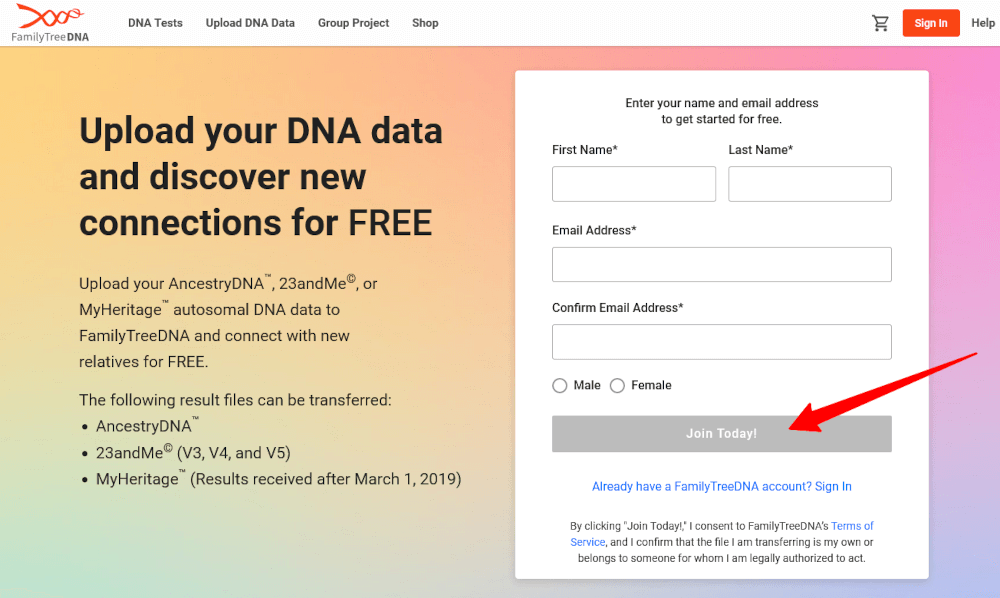
The next screen will ask you to select your transfer type, eg. Ancestry, 23andMe or MyHeritage. If you are uploading AncestryDNA data, click on AncestryDNA.
Then either drag & drop your DNA file onto the grey box, or click on browse for your file to find the file on your computer or cloud storage, and then click on SUBMIT.

Tip: If you are having trouble finding your downloaded file, AncestryDNA files are usually named dna-data-yyyy-mm-dd.zip, where yyyy-mm-dd is the date you downloaded your file from Ancestry, and are often located in your Downloads folder.
Once your file upload has been confirmed, you can then proceed to your myFTDNA account, or sign the Consent to Participate in Matching form. You won’t be able to see any DNA matches until you sign the consent form, but you can sign it now or later.
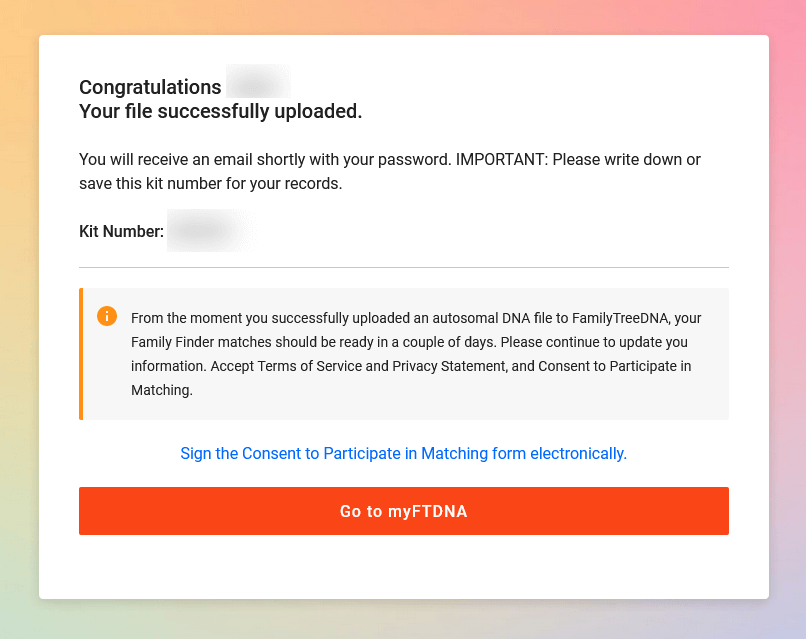
You will be prompted to enter your address and contact information, and then to scroll down to read and agree to FamilyTreeDNA’s Terms of Service and Privacy Statement. You can also read FamilyTreeDNA’s Law Enforcement Guidelines.

Before being able to view your DNA matches, you will need to consent to participate in matching. The consent form (below) explains the information you and your matches may see. Point 5 means that by consenting you will be opted into Investigative Genetic Genealogy Matching (IGGM). You can opt out via your Account Settings at any time.
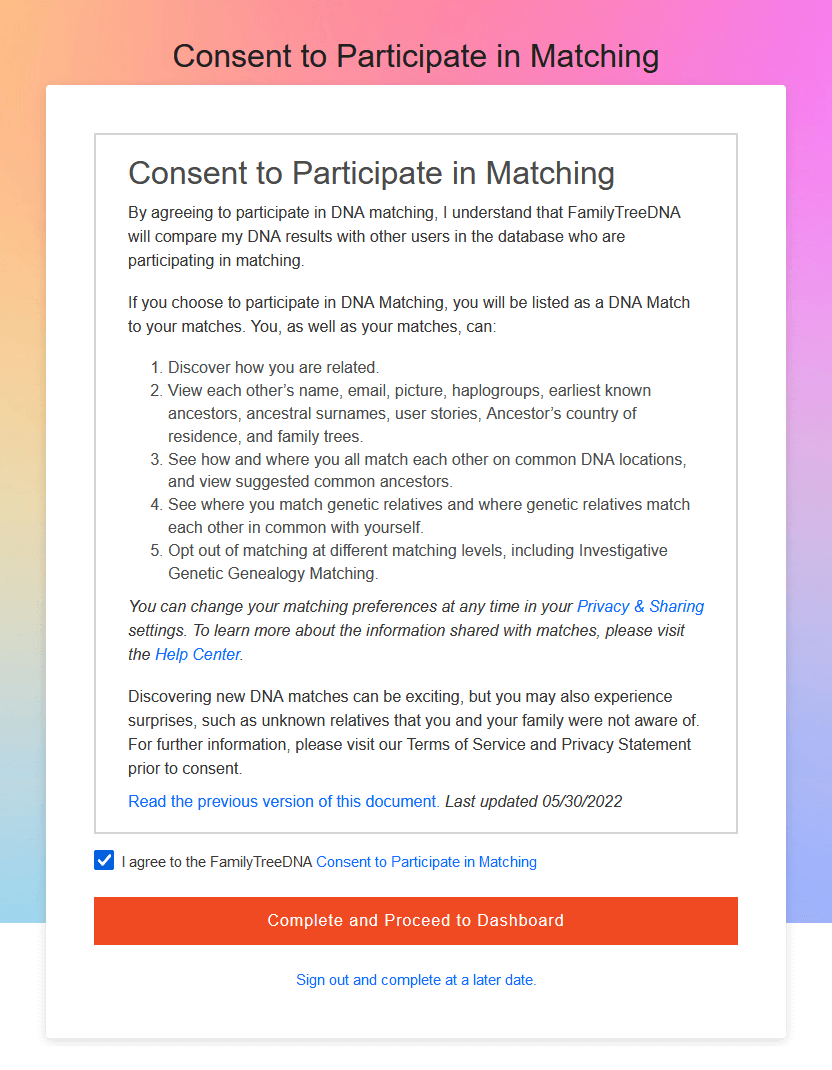
Within minutes you should receive an email with a kit number and password, which you use to sign in to your new FamilyTreeDNA.com account.
When you sign in, your name and kit number will be displayed in the top right corner of the page.

Click on the Privacy & Sharing tab and scroll down to the Investigative Genetic Genealogy Matching (IGGM) information and settings to check or change your status:
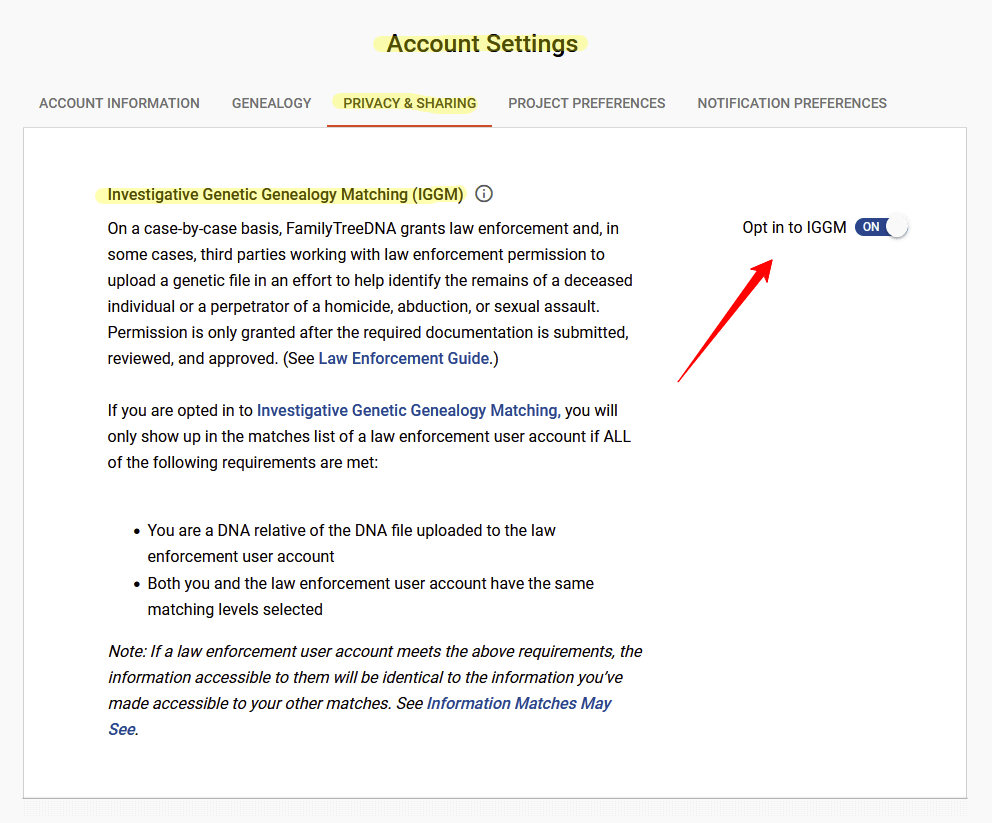
Processing time varies… your match list could be ready within hours, or it may take a few days.
Family Tree DNA will send you an email notification when your matches are ready… then you can sign in to your FTDNA account and click on Family Finder Matches:
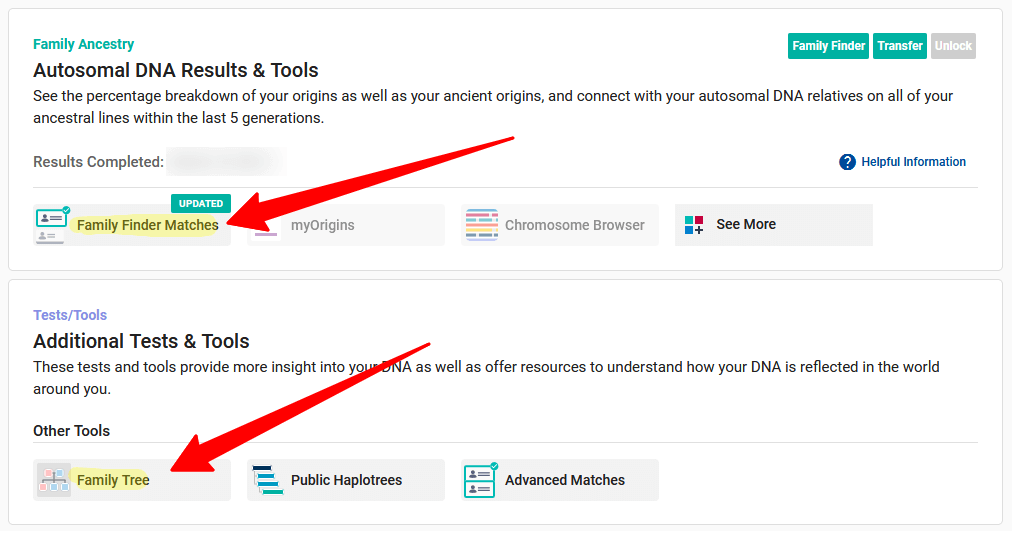
Each FTDNA account includes a free family tree, which you can build manually or upload a GEDCOM file (family tree format .ged).
Not all features are included in the free transfer, so some sections may be greyed out as in the image above. Matches are free, contacting your matches is free (email addresses are provided), your Family Tree is free, and some tools are free. Access to additional features, such as myOrigins (ethnicity estimate) and the Chromosome Browser, can be unlocked for US$19.ED
GEDmatch accepts uploads of DNA data files from many sources (view chart), including AncestryDNA, Family Tree DNA, MyHeritage, 23andMe, Living DNA.
To get started, go to gedmatch.com and sign in (if you already have a GEDmatch account), or click on the green JOIN FOR FREE button to register for a free account.
Enter your name, email address and a password and click REGISTER:
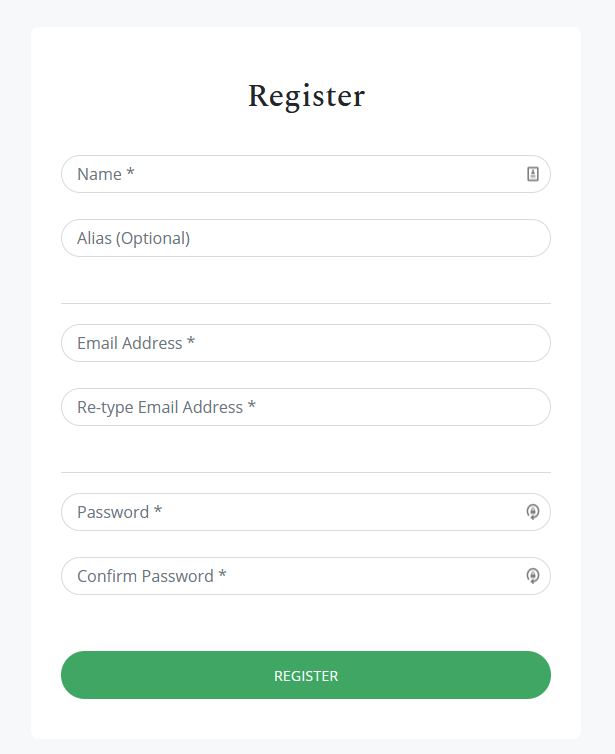
GEDmatch will send you a verification email, and once you click on the link in the email, your account will be confirmed and you can then login at gedmatch.com (you will get the option of signing into the new version or the old classic version; either will work but if you are new to GEDmatch, click Sign in to New).
On the top menu (or hamburger menu on a mobile device), click on Upload DNA:

On the upload form (as below), enter your name, an alias (optional), select your sex, you can leave the two haplogroup fields blank (or enter them if you know them from other test results), select the name of your testing company (eg. Ancestry), select whose DNA you are uploading (ie. yours), then select your privacy option (eg. Opt-in ensures you will be visible as a match to all law enforcement kits).
Click on Browse to select your DNA data file from your computer or cloud storage, then once it is selected, click on the green UPLOAD button and your file will then be uploaded.
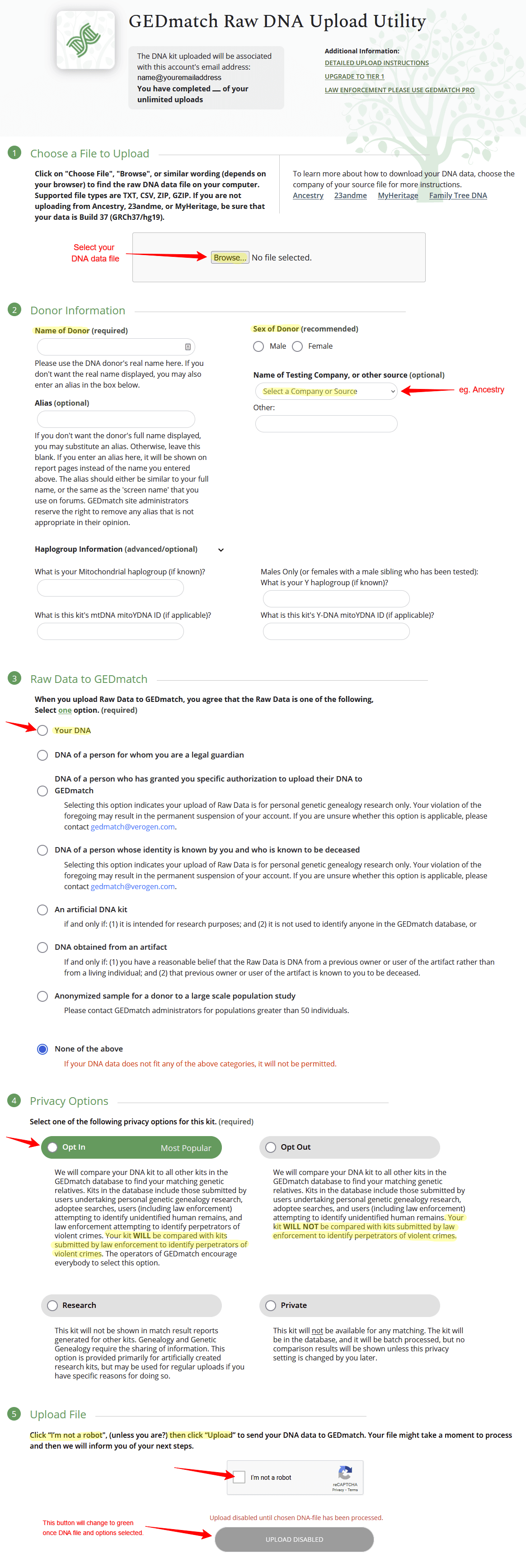
You will then be given your own unique GEDmatch kit number. Note it down as per the instructions, but remember that you can always easily find your kit number on the home (Dashboard) page in your GEDmach account.
Log back into your GEDmatch account in a couple of days to see if your kit has finished processing (your kit number will have a green tick next to it on your Dashboard page).
Once your DNA has finished processing, you can view your matches by running the One-To-Many – Limited Version matches report from GEDmatch’s dashboard page:
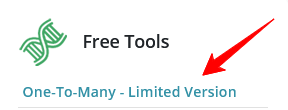
Enter your GEDmatch kit number into the box near the top, leave all the other settings at their default values, and then click SUBMIT.
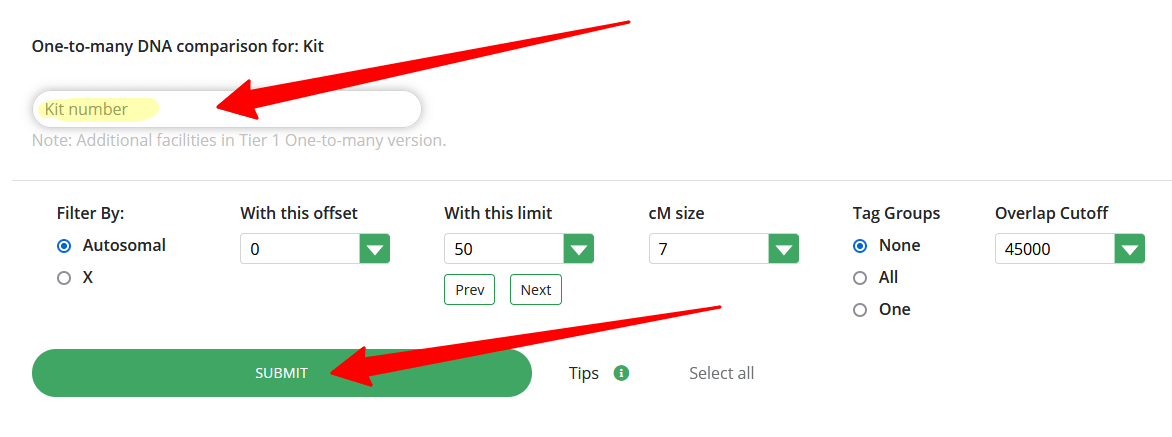
Your match list will show your closest matches at the top of the list, including their name/alias, email address, linked family trees, sex, mtDNA & Y-DNA haplogroups, and amounts of shared autosomal DNA and X-DNA.
To learn more about the match reports, the basics about GEDmatch and how to use the most popular features and tools, read my blog post Tips for Using GEDmatch.
GEDmatch’s Education page provides links to videos and other educational resources.
Different people test their DNA at different companies, although most only test at one of the five available genealogy DNA testing companies. As well as uploading to FTDNA and GEDmatch, get even more free DNA matches to progress your family history research by uploading your DNA data to MyHeritage and Living DNA.
The DNAJustice.org database was launched on 12 Mar 2023 and has now opened for uploads.

To upload your DNA, go to DNAJustice.org and click on the CONTRIBUTE DNA button (highlighted orange in the image below), and follow the instructions to register, verify your email address and sign in to upload your DNA data file and enter any additional information.
You can sign in again the same way at any time to check or edit the information you share.
Enter your name and browse to select your DNA data file for upload. Tick to confirm that you are over 18 years old and that you accept the Terms of Service and Privacy Policy, then click Submit.
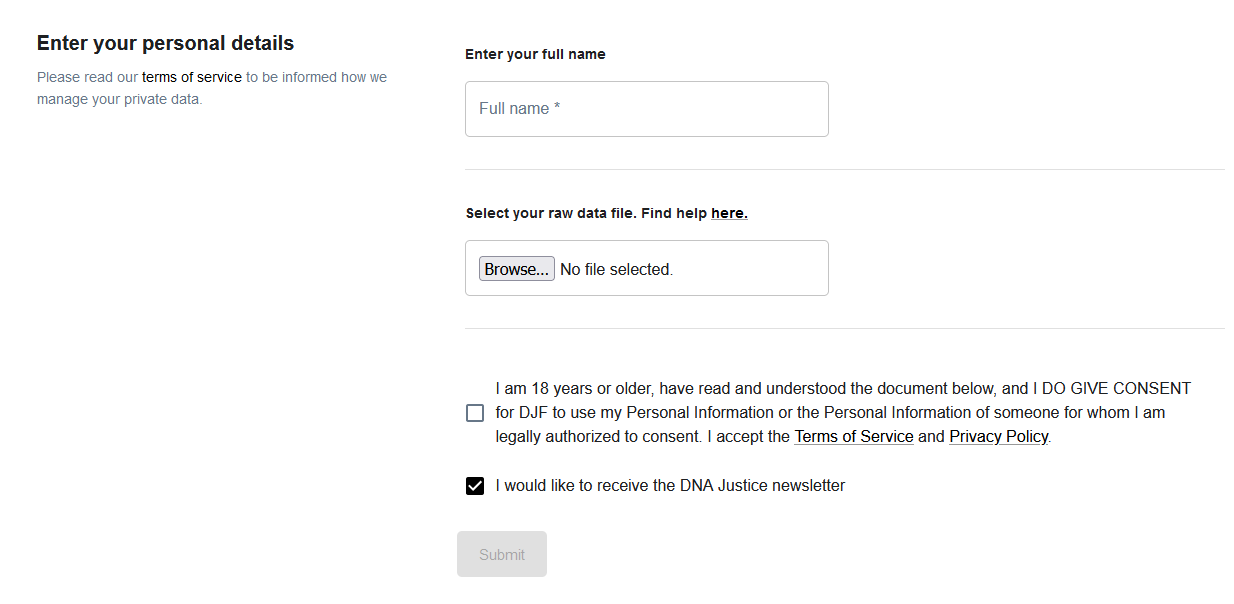
The next step is to enter (optional) personal & family tree information that will assist IGG.
If your biological parents are unknown, you can select the checkbox to request assistance identifying them:

Investigative Genetic Genealogy
Genetic Genealogy
Missing & Vulnerable Persons
Insurance
Derek Muller explains how part of your genetic code may already be in a database, and how it can help solve cold cases and provide answers to families. Includes animations, a tour inside part of FTDNA’s lab, and interviews with Verogen, Family Tree DNA and US detectives.
"Upload for free and opt-in to allow your DNA to help identify human remains and solve cold cases"
GEDmatch, Family Tree DNA and DNAJustice are the only autosomal DNA databases that allow law enforcement matching at this time. Consumers can upload/opt-in to participate in law enforcement matching, and can change their mind and settings at any time.
AncestryDNA, MyHeritage, 23andMe and Living DNA prohibit testing or uploads of law enforcement DNA profiles to their databases (refer to their T&C links in the article below). If you have tested your DNA at Ancestry, 23andMe, MyHeritage or Living DNA, you will not be visible as a DNA match and you cannot assist law enforcement/IGG cases unless you download your DNA data file and upload it to FTDNA and GEDmatch and opt-in to law enforcement matching, and/or upload to the new dedicated DNA Justice database to assist IGG.